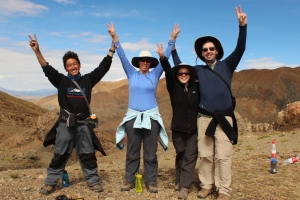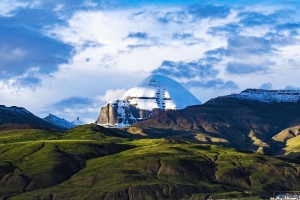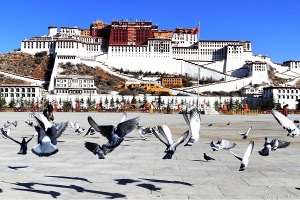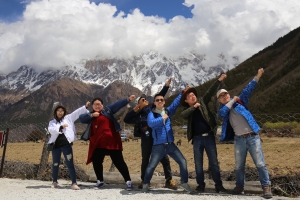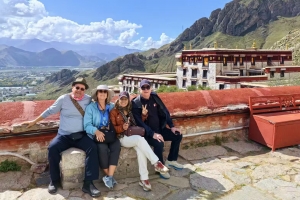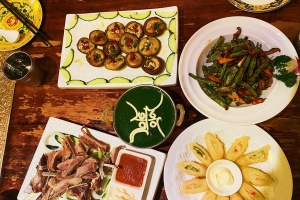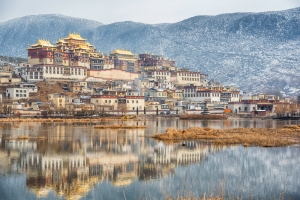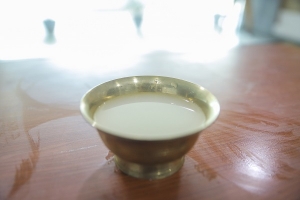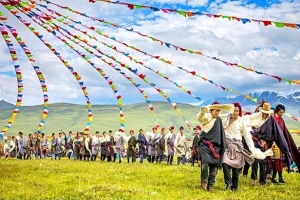Lhasa — perched high on the vast Qinghai-Tibet Plateau, wrapped in prayer flags and layered with centuries of faith, politics, and architecture — is a city that feels both ancient and alive. For travelers who come seeking spiritual sites, dramatic mountain light, and a living culture unlike any other, Lhasa is a destination that resonates long after the journey ends. This article traces Lhasa’s sweep of history: its geographic roots, the births and falls of kingdoms, the rise of Buddhist centers, the making of the Potala Palace, and how Lhasa transformed into the spiritual and cultural capital we recognize today.
Origins and Geography of Lhasa
Lhasa sits within the Yarlung Valley, an area that provided fertile ground for settlement despite the plateau’s high altitude and thin air. Its elevation and relative isolation shaped a culture that developed distinct political and religious institutions. The name Lhasa is often translated as “place of the gods,” a fitting description for a city whose skylines are dominated by massive monasteries, stupas, and the monumental silhouette of the Potala.
The geography of the region did more than create spectacular views; it also influenced how power and culture spread. Mountain passes, river valleys, and trade routes linked Tibet with neighboring Himalayan polities, Central Asia, and beyond, allowing ideas — especially religious ones — to flow into the valley even when it remained physically remote.
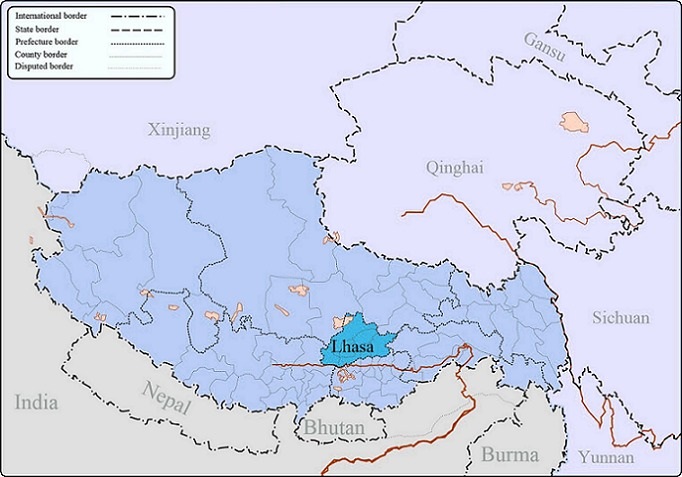
Lhasa Location Map
Songtsen Gampo and the Founding of Lhasa
Songtsen Gampo: The Unifier
Lhasa’s story is often framed by one pivotal figure: Songtsen Gampo. In the early to mid-7th century AD, Songtsen Gampo emerged as the powerful leader who began unifying the Tibetan plateau. He selected the Yarlung Valley as a political center and established a court there, setting the stage for what would eventually become Lhasa.
Building a Capital and Cultural Bridges
Under Songtsen Gampo, Lhasa grew from a strategic valley settlement into a nascent capital. He commissioned palaces and consolidated power by skillful diplomacy and marriage alliances. Two of his marriages — commonly described as alliances with neighboring polities — brought Buddhist images and ideas to Lhasa as part of the brides’ dowries. Those images were enshrined in the early temples at Ramoche and Jokhang, which became focal points for worship and pilgrimage for generations to come.
Songtsen Gampo’s reign marked the beginning of Tibet’s transformation from a collection of highland tribes into a centralized polity with strong religious and cultural dimensions. The early foundation he laid reverberates in Lhasa’s monuments and rituals today.
The Yarlung Empire and the Rise of Buddhism
Expansion, Influence, and Decline
Following Songtsen Gampo, the Yarlung rulers expanded Tibet’s reach for generations. Political fortunes rose and fell, and for almost three centuries the Yarlung lineage shaped the region’s identity. Yet empires are rarely permanent: after roughly 250 years, that early imperial unity frayed. Regional powers emerged and new centers of influence spread beyond the valley.
Monastic Centers and Religious Flourishing
As centralized political power ebbed and flowed, Buddhism continued to take root and flourish — not just in the city of Lhasa but across the plateau. Monasteries appeared as centers of learning, ritual, and community life. Over time, monastic networks would become as consequential as royal courts, shaping loyalty, landholdings, and social organization.
Lhasa remained spiritually central: Jokhang Temple, Ramoche, and later monastic complexes in and around the city anchored devotional life and pilgrimage routes. Pilgrims would travel vast distances to circumambulate temples, spin prayer wheels, and leave offerings — practices that remain deeply woven into the city’s daily rhythms.
From Tsang Rule to the Fifth Dalai Lama
The Tsang Period
With the decline of the Yarlung imperial structure, political weight shifted. The region known as Tsang — centered farther west of Lhasa — became a prominent power. For a time, Lhasa’s prominence dimmed; it was less the political capital and more one of several important towns in the highland mosaic.
This flux impacted everything from local economics to religious patronage. Lhasa’s role in trade and governance changed as regional leaders emphasized different centers and alliances. The city weathered reduced influence and periods of relative isolation, yet its sacred sites continued to draw devotees.
The Fifth Dalai Lama and the Return of the Capital
A major turning point came in the 17th century with Ngawang Lobsang Gyatso, the Fifth Dalai Lama. Through a combination of political acumen and military alliances — notably with Mongol forces — he consolidated power and established a new political order. In 1642, Lhasa reclaimed a central political role as the Dalai Lama’s seat, reshaping the city’s destiny.
Under the Fifth Dalai Lama’s patronage, Lhasa regained momentum. Monastic institutions received renewed attention, and grand building projects took shape. The city’s spiritual prestige intertwined with political authority, forging the model of government and religion that would dominate Tibetan political life for centuries.
Potala Palace: Symbol, Seat, and Skyline
Origins of the Potala
The Potala Palace, now the most iconic landmark of Lhasa, has its origins as both a fortress and a symbolic residence for spiritual leaders. Built on Marpo Ri (Red Hill), the Potala’s towering white walls and crimson roofs make it visible from across the city, an expression of religious and temporal power in one monument.
Architecture and Spiritual Meaning
More than a palace, the Potala is a complex of chapels, private quarters, assembly halls, and stupas. Its layered construction — white administrative buildings surrounding a central red spiritual core — reflects Tibetan cosmology and the practical needs of a ruling institution. Inside, intricate murals, sacred relics, and the tombs of previous leaders convey lineage, devotion, and artistic mastery.
Visiting the Potala is both a cultural and sensory experience: the thin air on the ascent, the hush of its interiors, and the dense iconography make it a singular place for understanding how religion and governance blended in Tibetan life.
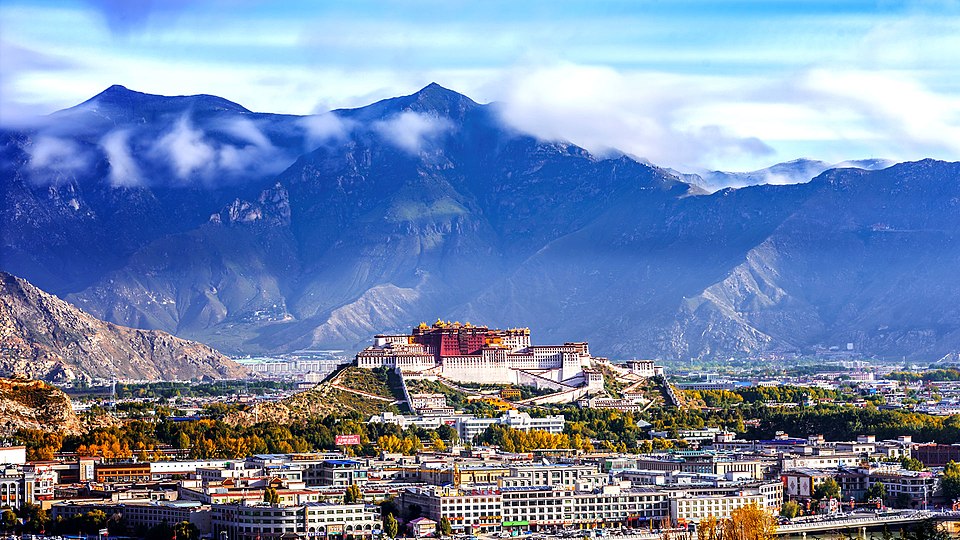
Potala Palace
Jokhang and Ramoche: The Heart of Devotion
Jokhang Temple: Center of Pilgrimage
Jokhang Temple, often described as Lhasa’s spiritual heart, became a magnet for pilgrims after its founding. With the arrival of sacred images and the support of early rulers, Jokhang assumed a central role in devotional practice. Devotees circumambulate its corridors, prostrate along its approach, and gather during major festivals to renew their commitments and seek blessings. The temple’s atmosphere — incense, prayer, and chants — evokes a living tradition that has persisted across centuries.
Ramoche: Companion Shrine
Ramoche, another ancient shrine in Lhasa, complements Jokhang’s spiritual gravity. Together, these temples form an axis of worship that has defined the religious topography of the city. Their art, relics, and rituals offer tangible links to early links between Tibet and its neighbors, reflecting the cultural exchanges of eras past.
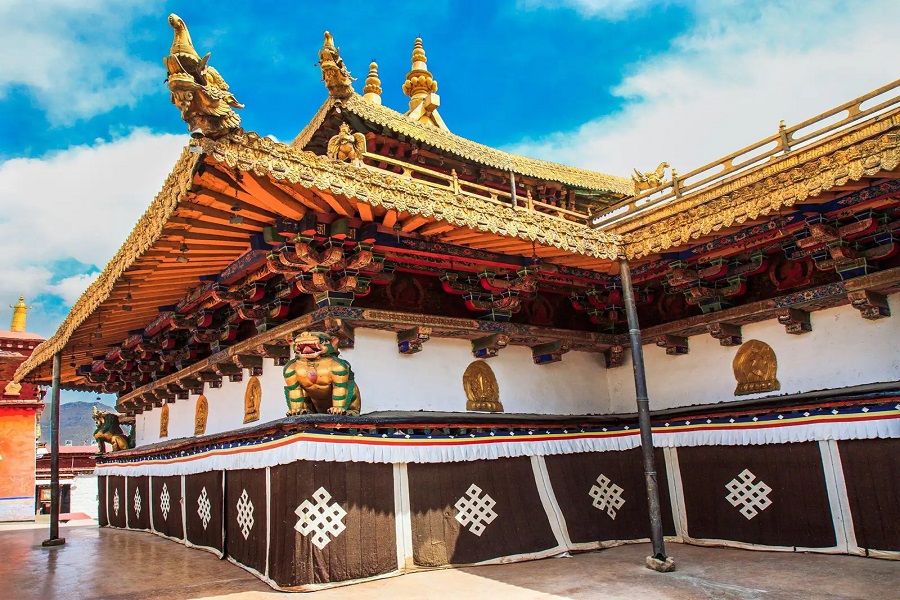
Jokhang- Temple
Shöl, Urban Life, and Cultural Transformations
The Lost Quarter: Shöl
Before mid-20th century changes, a neighborhood at the foot of the Potala known as Shöl was a thriving urban quarter with pathways connecting residents to Jokhang and other city centers. It was a place of daily life — markets, homes, and exchanges — now largely vanished. The disappearance of Shöl speaks to how urban landscapes evolve, often dramatically, when political, social, or ideological tides shift.
Cultural Revolution and Urban Change
The mid-20th century brought tumult to many historical sites across China and Tibet. During the Cultural Revolution, parts of Lhasa’s historic fabric suffered damage; certain gates and structures were removed or altered in the drive to redefine cultural symbols. One notable change was the demolition of Lhasa’s west gate during that period. Later restoration work sought to heal some of those scars: a rebuilt (though smaller) west gate was completed in 1995, a gesture toward preserving and rehabilitating the city’s historic image.
These transformations—losses and later reconstructions—remind visitors that what stands today is the result of continuous living history, with ruptures and recoveries shaping what we now encounter.
Pilgrimage, Festivals, and Daily Rituals in Lhasa
Pilgrims and Kora
One of the most moving aspects of Lhasa is the visible practice of pilgrimage. Pilgrims perform kora (circumambulation) routes around Jokhang, the Barkhor circuit, and other sacred points, sometimes prostrating along the way in an act of devotion that may cover long distances. The Barkhor — a winding lane around the Jokhang — is both a devotional path and a lively marketplace, where prayer wheels spin alongside vendors selling religious items and local crafts.
Festivals: Losar and Beyond
Lhasa’s calendar is punctuated by festivals, the most famous of which include Losar (Tibetan New Year) and various monastic festivals and ceremonies. These events are communal and exuberant: masked dances, ritual music, public offerings, and special prayers draw local families and visitors alike. For travelers, attending a festival offers a rare glimpse into communal identity and religious expression.
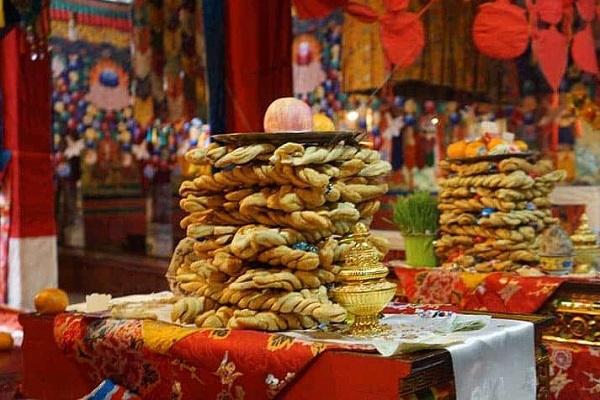
Losar Tibetan New Year
Modern Lhasa: Balancing Heritage and Change
Preservation and Tourism
In recent decades, Lhasa has become much more accessible to international travelers. Infrastructure improvements, guided tours, and services developed to welcome visitors have changed the city’s pace and appearance. While tourism brings economic benefits and cross-cultural exchange, it also creates pressures on fragile heritage sites and the rhythms of local life.
Conservation efforts seek to strike a balance: protect the integrity of monuments like the Potala and Jokhang while enabling people worldwide to witness Tibetan culture. Responsible travel practices — respecting religious spaces, dressing appropriately, and following local guidelines — help ensure that Lhasa’s sites remain meaningful for future generations.
Everyday Life in the City
Beyond monuments and festivals, Lhasa is a working city where residents go about daily life. Local markets, tea houses, and neighborhood temples form the texture of everyday existence. Street vendors sell snacks and traditional items; monks and nuns move between monastic colleges and prayer halls; families gather at courtyards. For travelers, spending time simply observing and engaging politely with locals can reveal a deeper appreciation for the enduring character of the city.
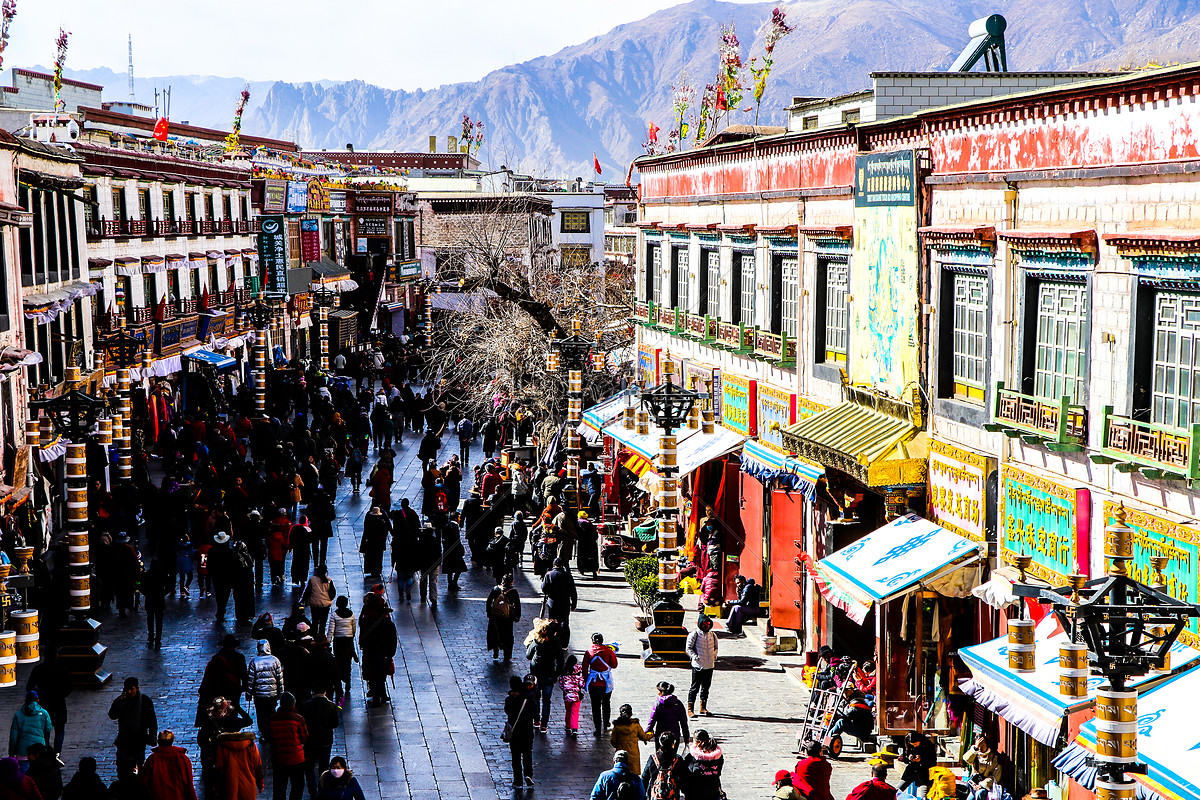
Modern Lhasa
Why Lhasa Still Matters
Lhasa’s significance extends beyond tourism: it’s a living archive of Tibetan civilization. Whether you are drawn by architecture, spirituality, or human stories, the city offers a unique perspective on how faith and governance can weave together to form a durable cultural heart. The spaces of Lhasa — temples, palaces, markets, and streets — still facilitate memory, devotion, and daily life. For that reason, a visit is as much an encounter with a present community as it is a walk through history.
Planning a Visit: Practical Considerations
Altitude and Health
Lhasa sits at high elevation. Most travelers feel the effects of altitude—shortness of breath, tiredness, headache—so take time to acclimatize, stay hydrated, and avoid heavy physical activity on arrival. Consult a healthcare professional before travel if you have preexisting conditions.
Best Seasons and Weather
Spring and autumn typically offer stable weather and clear skies, although conditions on the plateau can change quickly. Winters are cold and dry; summers can be wet in short bursts. Pack layers, sun protection, and comfortable walking shoes.
Permits and Entry
Travel to Tibet may require specific permits in addition to a standard visa depending on your nationality and route. Work through experienced local operators or consult official guidelines to ensure paperwork is in order before arrival. (Journey2tibet and other reputable local agencies can assist with permits and itinerary planning — see the final paragraph for details.)
Lhasa — A City That Keeps Speaking
From the establishment of a capital by Songtsen Gampo, the flowering of Buddhism, the ebb and flow of regional powers, to the spiritual and political revival under the Fifth Dalai Lama, Lhasa’s history is a story of endurance and adaptation. The Potala and Jokhang are more than tourist attractions; they are living centers of belief and memory. Travelers who come with curiosity and respect will find Lhasa to be a place where past and present converse — a city that keeps speaking through its stones, its rituals, and its people.
If you’d like help planning a meaningful, respectful trip to Lhasa that balances cultural immersion, safety, and local insight, Journey2tibet can provide tailored itineraries, permit assistance, and knowledgeable local guides. Whether you prefer a deep spiritual itinerary focused on monastic life or a more relaxed cultural tour that highlights Lhasa’s architecture and markets, a local team will help you experience the city thoughtfully and sustainably.

